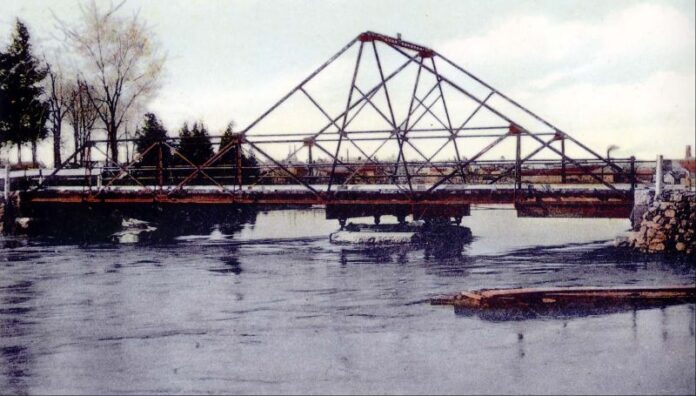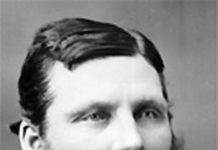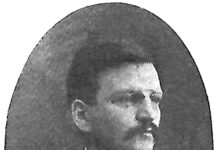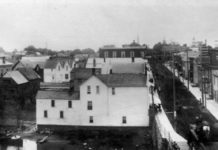

Municipal politics have always thrown up some great stories, and the history of municipal politics in North Grenville is no exception. In 1898, the Village of Kemptville enjoyed the spectacle of two young, newly-elected councillors pushing through expensive improvements around the community which led to the resignation of two older members, injunctions being brought by the ex-councillors to stop the building of a bridge across the South Branch, court appeals claiming the illegitimacy of elections, and a strenuous contest between local Liberals and Conservatives to paint the other side as tax-squandering reprobates who were rushing the municipality into bankruptcy. And, of course, claims by all sides that they had kept taxes low.
Most of the fun centred on the swing bridge which crossed the South Branch at what is now Bridge Street. It provided access to the CPR station on Wellington, the pier and mills belonging to the Clothiers on the south bank of the river, and a local alternative to the Prescott Street bridge, the only other crossing available. For years, the bridge had been ready to collapse, and had become something of a political football, with both political parties promising to have the provincial government pay for its replacement. But for years, nothing happened.
Municipal elections were held every year in those days, and two new members arrived on Council for the 1898 session, James MacGregor, a local businessman, and G. Howard Ferguson, lawyer and son of Dr. Charles Ferguson who had been the Conservative M.P. for the district for many years. The two young men soon earned a reputation as free spenders on local improvements. In May, a By-law was passed raising $10,000 in debentures to pay for road and bridge improvements in Kemptville. Ferguson and MacGregor were authorised to put in concrete sidewalks on parts of Clothier and Prescott Streets, but the two elder councillors, W. H. Anderson and J. G. Pelton, had started to resent deeply the energy of their younger colleagues, who seemed not to understand that, as newcomers, they were not supposed to outshine their more experienced elders. It was not completely irrelevant that both Anderson and Pelton were good Liberals who had been long-time opponents of Dr. Ferguson. They were unhappy to share Council with his son, and the division in Council followed party lines.
In July, 1898, the controversy erupted over what Anderson and Pelton believed was unauthorised overspending on the new sidewalks. Instead of paving 8,000 feet on the two streets, over 21,000 feet had been covered. The two men protested by tendering their resignations from Council, possibly believing that they could force Ferguson and MacGregor into an election. But G. Howard had politics in his blood. He calmly went into Council on August 18 with only MacGregor and the Reeve present, and moved that the two resignations be accepted and the paving work continued. Naturally, the motions passed – there was no-one there to vote against it anymore. At another meeting of Council five days later, Ferguson and MacGregor actually voted through even more paving work, without any opposition.
To add insult to injury, instead of calling by-elections to fill the vacant positions, the Council simply nominated others to take the positions on council. That nomination meeting became a fierce clash between Pelton and MacGregor, both accusing the other of misrepresenting the facts, as they say. The report in the newspaper described it thus: “Their statements conflicted with each other very materially and the contradictions flew across the hall like hot shot, to the amusement of the many spectators”. The meeting was so controversial, that the Reeve didn’t attend and it was left to Ferguson and MacGregor, as the only elected officials there, to carry on the meeting.
With Council allied with the tax spenders, it was time to turn to the subject of the bridge again. Tenders were issued for the work, and the lowest bid accepted. Work had begun on demolishing the old metal swing bridge that had stood for so long, when another exciting development took place. The Bailiff appeared with an injunction to stop work immediately. The signatories to the injunction included the two ex-councillors and the leading Liberal business men of the village, who stated that there was no money to pay for the work and that one of the new councillors had not been legitimately elected. The bridge was left half-demolished and remained that way until after the next election. But that did not end the fun and games in the Kemptville Council, as the 1899 election threw up yet more complications.








